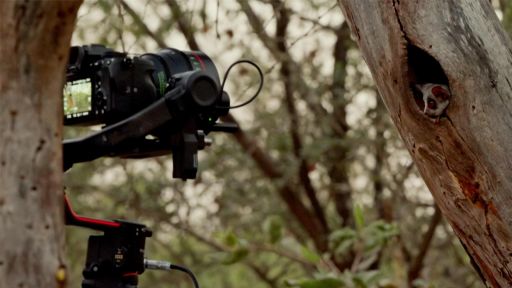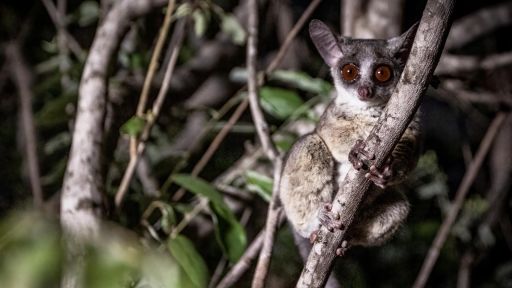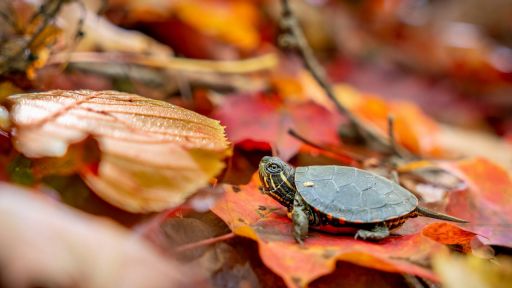This young bushbaby learned from his mother where to find an important winter food: acacia gum. A large and reliable source can be found half a mile away, but he must navigate through the dense forest to get there.
Features



- [Narrator] He has learned from his mother where to find an important winter food: Acacia gum.
(insects chirping) A large and reliable source can be found a half-mile away.
He must navigate through the dense forest to get there.
As he goes, he uses another skill he learned from his mother: to pee on his hands.
It is a way of scent marking, and the super sticky urine gives him grip.
(bushbaby chattering) A special membrane at the back of his eye reflects and amplifies the moonlight, helping him find his way in the dark.
(exciting music) He makes fast progress.
Bushbaby hind legs are super powered, with stretchy tendons and extra large muscles.
They catapult him from tree to tree at six feet a second.
(air swishing) (music) He's nearly made it to the Acacia gum.
(wind whooshing) But after the moon sets, his vision is limited.
It is risky to keep going when he can't see.
His hearing is now all he has to keep himself safe from predators.
Bushbabies hear higher frequencies than humans, a range that is perfectly attuned to detecting noises in the forest.
(insects chirping) (animals chattering) His enormous ears respond to every sound, every creak, (bushes rustling) as he tries to work out who is friend, who is foe, and what is food.
The coast appears to be clear, and food is just one jump away.
